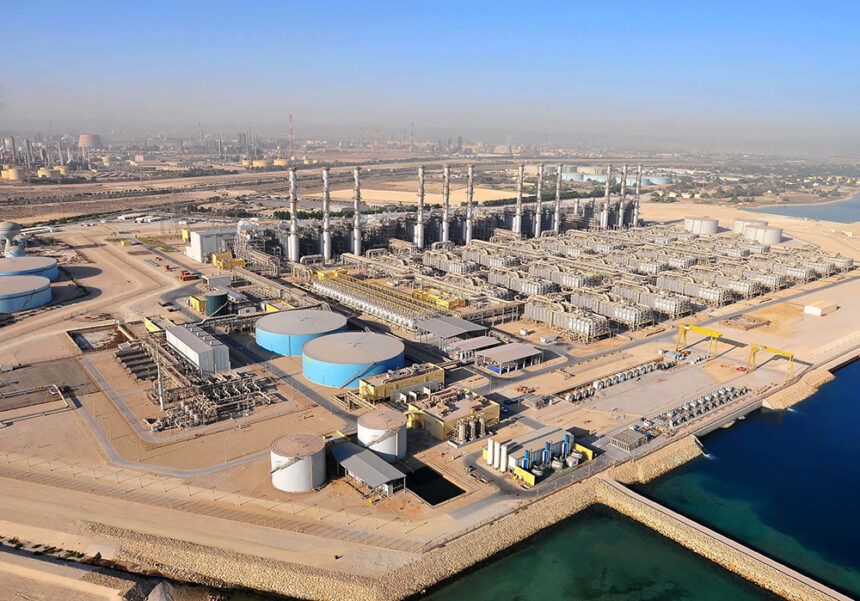Saudi Arabia and Kuwait have unveiled a highly significant oil discovery in the neutral zone, marking a major breakthrough. The discovery was made in the North Wafra Wara-Burgan field, with crude oil flows exceeding 500 barrels per day. This is the first major find since both countries resumed production operations in the area in mid-2020.
Highly Significant Boost to Energy Security
The North Wafra Wara-Burgan field, located five kilometers north of the Wafra field, holds new reserves. The discovery is seen as highly significant in boosting both countries’ standing as reliable global energy suppliers. It is also expected to enhance their exploration and production capabilities, according to Saudi Press Agency (SPA).
“This discovery marks a key milestone since the resumption of production in the partitioned zone and its offshore areas,” SPA stated. The discovery is especially important as it contributes to global energy security amid rising demand for highly significant oil. This new development is poised to strengthen Saudi Arabia and Kuwait’s presence in the oil market.
Read More: OnlyFans Owner in Advanced Talks to Sell at $8 Billion Valuation
Strategic Agreement Strengthens Cooperation
The discovery aligns with an agreement signed in 2019 between Kuwait and Saudi Arabia. This agreement divides oil production in the neutral zone, which has the potential to bring an additional 500,000 barrels per day (bpd) to the market. This expansion is expected to help meet global oil demand.
The neutral zone contains two key oilfields: the onshore Wafra field and the offshore Khafji field. Both fields ceased production in 2014 and 2015, respectively, but were restarted in July 2020. These fields now play a critical role in both nations’ energy strategies.
Importance of New Discoveries for Global Oil Demand
Giovanni Staunovo, strategist at UBS, commented, “Oil demand continues to rise, making new discoveries vital for sustaining production. Such finds help compensate for declines from older wells.” This reinforces the importance of ongoing investments in exploration.
Both Saudi Arabia and Kuwait are part of OPEC, which influences global oil supply. These nations have used spare production capacity to balance the global oil market effectively. New discoveries like the one in the neutral zone highlight their crucial role in energy supply management.
Saudi Aramco’s Recent Discoveries Support Long-term Energy Goals
This latest find follows Saudi Aramco’s announcement last month of 14 new oil and gas fields discovered across Saudi Arabia. These fields are expected to support the kingdom’s long-term energy strategies and bolster its ability to meet both domestic and global energy demands.
Kuwait also made headlines last year with the discovery of “huge commercial quantities” of oil and gas at the Al Nokhatha field. Estimates suggest that this field could yield 2.1 billion barrels of light oil and over 5 trillion cubic feet of gas.
Concerns Over Oil Price Volatility Amid Geopolitical Uncertainties
While these discoveries are positive news for global oil supply, market conditions are challenging. Oil prices remain under pressure from demand concerns, especially amid US tariff uncertainties. These factors have contributed to concerns about potential oversupply.
The OPEC+ group, led by Saudi Arabia and Russia, announced a production increase of 411,000 bpd for May and June. Similar increases are expected for July, which could further impact oil prices and market stability. OPEC+ decisions will be closely monitored by analysts.
Strategic Alliance Reinforced by Discovery
Ipek Ozkardeskaya, senior analyst at Swissquote Bank, noted, “The oversupply situation will not lead to immediate positive impacts, but this discovery strengthens the strategic alliance between Saudi Arabia and Kuwait.” The discovery also enhances the energy security and production capabilities of both nations.
Despite the rising pressures on the oil market, the transition to cleaner energy sources is expected to take time. Both Saudi Arabia and Kuwait are well-positioned to monetize the additional oil barrels from these discoveries over the long term.
Also Read: Dubai Set to Host Mega EV Test Drive Event at Yalla Green Mobility Show
Market Predictions and Future Outlook for Oil Prices
As of the latest market update, Brent crude was trading at $64.82 per barrel, up by 0.06 percent. West Texas Intermediate (WTI) was up by 0.05 percent, reaching $61.56 per barrel. These price fluctuations reflect ongoing market volatility due to various geopolitical and economic factors.
Jadwa Investment predicts that Brent crude will fluctuate between $63 and $65 per barrel for the rest of the year. They also forecast Saudi Arabia’s crude production to average 9.4 million bpd in 2025, a 4 percent increase from 2024. Higher production volumes are expected to mitigate the impact of lower oil prices.
In The End
The ongoing developments in the Saudi-Kuwait neutral zone and the broader oil market underscore the importance of continued investment in exploration and production. These discoveries play a vital role in meeting the world’s growing energy demands.
Click Here for more business news.






